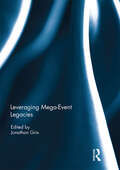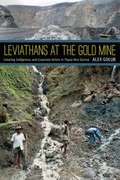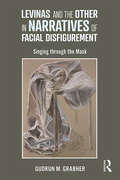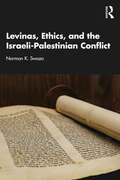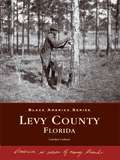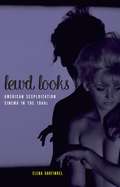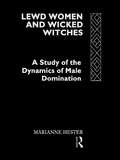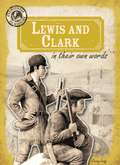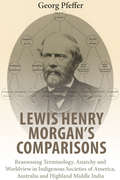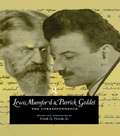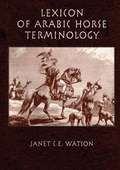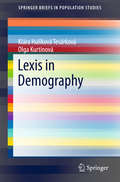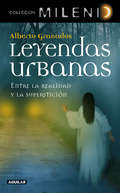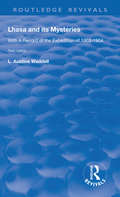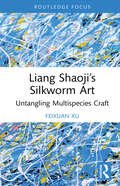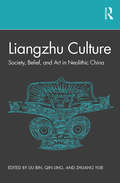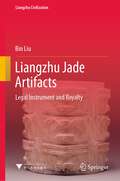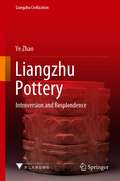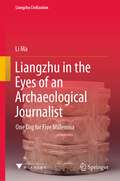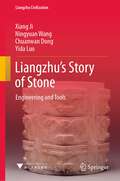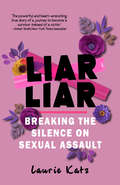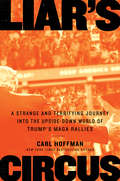- Table View
- List View
Leveraging Mega-Event Legacies
by Jonathan GrixThis is a multi-disciplinary contribution to the burgeoning literature on and around mega-events in general and sports mega-events in particular. The volume is not specifically about mega-events or their management, but rather how such events act as a lens through which a number of important and critical questions about the decisions to host, the host nation, its society and the politics of culture, sport and leisure more broadly can be dealt with. In doing so this book seeks to build on, and out from initial work on (sports) mega events by acknowledging the major shift towards ‘emerging’ states awarded such events since 2006 and incorporating the latest advances in research that have taken place in recent years. For example, debates about what constitutes a ‘mega-event’, what is meant by a ‘legacy’, what is ‘soft power’ and so on are dealt with from a team of leading academics from a variety of academic disciplines. This book was previously published as a special issue of Leisure Studies.
Leveraging Migration for Africa
by William Shaw Dilip Ratha Sanket Mohapatra Sonia Plaza Ça Lar Özden Abebe ShimelesA joint effort led by the African Development Bank and the World Bank, 'Leveraging Migration for Africa' is the first comprehensive publication on harnessing migration, remittances, and other diaspora resources for the development of Africa. It comes at a time when countries in Africa and elsewhere are grappling with difficult choices on how to manage migration. Policy makers can help leverage the contributions of migrants to the development of Africa, reduce remittance costs, improve the efficiency of remittance markets in both origin and destination countries, and address the needs of the origin countries without restricting the emigration of high-skilled professionals. Innovative financing mechanisms such as issuance of diaspora bonds and securitization of future remittance flows can help finance big-ticket projects, such as railways, roads, power plants, and institutions of higher learning that will, step by step, help to transform Africa. This volume contributes to a greater understanding of migration and its potential role in Africa's development.
Leviathans at the Gold Mine: Creating Indigenous and Corporate Actors in Papua New Guinea
by Alex GolubLeviathans at the Gold Mine is an ethnographic account of the relationship between the Ipili, an indigenous group in Papua New Guinea, and the large international gold mine operating on their land. It was not until 1939 that Australian territorial patrols reached the Ipili. By 1990, the third largest gold mine on the planet was operating in their valley. Alex Golub examines how "the mine" and "the Ipili" were brought into being in relation to one another, and how certain individuals were authorized to speak for the mine and others to speak for the Ipili. Considering the relative success of the Ipili in their negotiations with a multinational corporation, Golub argues that a unique conjuncture of personal relationships and political circumstances created a propitious moment during which the dynamic and fluid nature of Ipili culture could be used to full advantage. As that moment faded away, social problems in the valley increased. The Ipili now struggle with the extreme social dislocation brought about by the massive influx of migrants and money into their valley.
Levinas and the Other in Narratives of Facial Disfigurement: Singing through the Mask
by Gudrun M. GrabherOffering readings of a range of fictional and biographical texts, including work by Richard Selzer, Nathaniel Hawthorne, Gaston Leroux, Willa Cather, Natalie Kusz, and Lucy Grealy, this book examines reactions to facially disfigured people on the basis of Emmanuel Levinas’ ethics of the face. Drawing on Levinas’ concern with the holistic dimension of the face as an encounter with the other’s "whole person" and the sense of moral obligation that this instils in us—a sense that disfigurement disrupts by drawing our attention to the disfigurement as a "spectacle" and threatening to limit our view of that individual—the author explores how we react to the facially disfigured and how we ought to react.
Levinas, Ethics, and the Israeli-Palestinian Conflict
by Norman K. SwazoThis book engages with the philosophical thought of French-Jewish philosopher Emmanuel Levinas. It studies some of his Talmudic readings and his concern for a Jewish “universal ethics.” It does so in relation to the protracted Israeli-Palestinian conflict and the moral imperatives that apply to the conduct of the State of Israel and the Israeli Defense Forces (IDF) vis-a-vis the Palestinian people. The book not only looks at what Levinas understands about the moral “universality” of the Talmud but also applies this understanding to the assessment of the IDF military operations ongoing in Gaza since October 7, 2023. In this way, the author makes a distinction between the moral teaching of rabbinic Judaism to which Levinas appeals for its universality (on the one hand) and the ideology of political Zionism (on the other hand) to which Levinas subscribed, hence moral critique of the latter required in view of this moral teaching.A unique contribution, this book will be indispensable to scholars and researchers of European philosophy, Jewish ethics, religious studies, Talmudic studies, and contemporary moral philosophy, as well as those interested in the Israeli-Palestinian conflict.
Levy County, Florida (Black America Series)
by Carolyn CohensDriving along Levy County highways, one can always see crops of corn, watermelons, peanuts, cantaloupes, and vegetables. The county contains the cities of Cedar Key, noted for its romantic atmosphere and annual seafood and art festivals; Chiefland, a small town with a friendly atmosphere; and Rosewood, noted today for its tours and markers dedicated to those who tragically lost their lives.
Lewd Looks: American Sexploitation Cinema in the 1960s
by Elena GorfinkelOne of the most fascinating phenomena of 1960s film culture is the emergence of American sexploitation films—salacious indies made on the margins of Hollywood. Hundreds of such films were produced and shown on both urban and small-town screens over the course of the decade. Yet despite their vital importance to the film scene, and though they are now understood as a gateway to the emergence of publicly exhibited hardcore pornography in the early 1970s, these films have been largely overlooked by scholars.Defined by low budgets, quick production times, unknown actors, strategic uses of nudity, and a sensationalist obsession with unbridled female sexuality, sexploitation films provide a unique window into a tumultuous period in American culture and sexual politics. In Lewd Looks, Elena Gorfinkel examines the social and legal developments that made sexploitation films possible: their aesthetics, their regulation, and their audiences. Gorfinkel explores the ways sexploitation films changed how spectators encountered and made sense of the sexualized body and set the stage for the adult film industry of today. Lewd Looks recovers a lost chapter in the history of independent cinema and American culture—a subject that will engross readers interested in media, sexuality, gender, and the 1960s. Gorfinkel investigates the films and their contexts with scholarly depth and vivid storytelling, producing a new account of the obscene image, screen sex, and adult film and media.
Lewd Women and Wicked Witches: A Study of the Dynamics of Male Domination
by Marianne HesterIn the sixteenth century and seventeenth centuries it was women who were almost exclusively persecuted as witches. However, the witch craze has been subjected to surprisingly little feminist analysis. In Lewd Women and Wicked Witches, Marianne Hester reviews and develops revolutionary feminist thinking. Accordingly, she shows how witches can be seen as victims of the oppression of a male dominated society.Concentrating on English source material, the author shows how witch-hunts may be seen as an historically specific example of male dominance. Relying on an eroticised construct of women's inferiority, they were part of the ongoing attempt by men to maintain their power over women.
Lewis And Clark In Their Own Words
by Janey LevyThe journey of Meriwether Lewis and William Clark across the newly acquired Louisiana Territory from 1804 to 1806 was truly extraordinary. It's best explained using the journals of these two explorers. In this book, primary source materials were carefully chosen to highlight the most interesting and exciting parts of the adventure. An Eyewitness to History book.
Lewis Henry Morgan's Comparisons: Reassessing Terminology, Anarchy and Worldview in Indigenous Societies of America, Australia and Highland Middle India
by Georg PfefferAbout 150 years ago L. H. Morgan compared relationship terminologies, societal forms, and ideas of property to recognize the interdependence of the three domains. From a new perspective, the book will re-examine, confirm and criticize, Morgan’s findings to conclude that reciprocal affinal relations determine most ‘classificatory’ terminologies and regulate many non-state societies, their property notions, and their rituals. Apart from references to American and Australian features, such holistic socio-cultural constructs will be exemplified by elaborate descriptions of little-known contemporary indigenous societies in highland Middle India, altogether comprising many millions of members.
Lewis Mumford and Patrick Geddes: The Correspondence
by Frank G. NovakFirst published in 1995. Routledge is an imprint of Taylor & Francis, an informa company.
Lewis and Clark Among the Indians
by James P. RondaThe Lewis and Clark expedition has long symbolized the westering impulse in American life. No other exploring party has so fully captured the imagination of ordinary citizens or the attention of scholars. In ways that defy rational explanation, the picture of Lewis and Clark struggling up the Missouri and across the mountains to the great western sea continues to stir our national consciousness. Books, highway markers, museum displays, and a foundation dedicated to preserving the Lewis and Clark trail all bear witness to a fascination that time has only deepened. Over the generations since the expedition returned from the Pacific, its achievement and significance for America heading west have undergone constant reappraisal. From an early emphasis on the journey as an epic of physical endurance and courage, Lewis and Clark have emerged in this century as pioneer western naturalists, cartographers, and diplomats. Thomas Jefferson, the man William Clark once called "that great Character the Main Spring" of the expedition, would have heartily endorsed an evaluation of the Corps of Discovery that included sharp minds as well as strong bodies. And Jefferson would have reminded us that his explorers were part of that long encounter between Euro-Americans and native Americans. In its daily affairs and official actions, the expedition passed through, changed, and was in turn changed by countless native lives. In the simplest terms, this book is about what happens when people from different cultural persuasions meet and deal with each other. The Lewis and Clark expedition was an integral and symbolic part of what James Axtell has aptly called "the American encounter." Nearly two and a half years of almost constant contact between explorers and Indians illuminate the larger and longer series of cultural relationships that began centuries before on the margins of the continent. This book is not a retelling of the familiar Lewis and Clark adventure. That story has been told with grace and skill by Bernard DeVoto and in the magnificent photographs of Ingvard Eide and David Muench. But readers will find moments of high drama not previously well known or clearly understood.
Lexicon Of Arabic Horse Terminology
by Janet C.E. WatsonFirst Published in 1996. This is a lexicon of Arabic horse terminology covering Egyptian, Bedouin and Classical Arabic. The Egyptian data for this book were collected in Cairo between October 1982 and September 1983, December 1983, December 1984, and March to April 1988. Most of this time the author spent exercising and training Egyptian and European horses, and later, teaching horse riding.
Lexis in Demography
by Klára Hulíková Tesárková Olga KurtinováThis book explores the life of economist and social scientist Wilhelm Lexis and the key demographic instrument named after him: the Lexis diagram. It describes this vital tool, which helps demographers visualize data, and examines its various forms through a specially designed example. As a result, readers get to see the Lexis diagram in practice and gain first-hand insight into its different forms.The authors first present a brief description of the life of W. Lexis with information about his childhood, studies, and work. Coverage details the places closely related to him as well as his working positions. It also lists and characterizes his publications.The book then goes on to summarize and describe the chronological development of the Lexis diagram, from initial developments through the specific contributions of W. Lexis to the refinements of those who followed. Throughout, it clearly describes as well as graphically and practically illustrates all the different versions of the diagram covered.Next, readers are presented with contemporary practical applications, including: Statistical Analysis System (SAS), R, and Stata software as well as selected key-studies from demographic, epidemiologic, and migration research.The Lexis diagram is an essential tool for working correctly with demographic data. This book commemorates the man who helped to develop these diagrams and his unquestionable influence on demography. It also provides readers with deep knowledge and insights into this basic, yet important, tool.
Leyendas urbanas: Entre la leyenda y la superstición
by Alberto GranadosUna colección de historias que le pondrá los pelos de punta o le hará sonreír. En cualquier caso, una forma entretenida de conocer los miedos y supersticiones que, en mayor o menor grado, todos compartimos. Las historias fantásticas nos acompañan desde el principio de los tiempos, relatadas al calor de la hoguera y transmitidas de generación en generación. Son fábulas destinadas a entretener, asustar o sorprender, dirigidas sobre a todo a los más jóvenes y generalmente con moraleja: no vayas por ese camino, no llegues tarde a casa, no hables con desconocidos. En la actualidad y sobre todo gracias a las nuevas tecnologías, estas narraciones se conocen como «leyendas urbanas» y han pasado a formar parte del inconsciente colectivo. Inquietantes, macabras, divertidas o directamente increíbles, circulan por Internet, llegan a nuestros buzones de correo electrónico y a nuestros teléfonos móviles ¿Quién no ha oído hablar de la misteriosa chica de la curva o de los cocodrilos que viven en las alcantarillas de Nueva York? ¿Y qué hay de la célebre historia de Ricky Martin, el perro y la mermelada? Todas ellas y más están en este volumen, que incorpora también las leyendas de más reciente creación: Pandilla Sangre, la sonrisa del payaso, la burundanga...
Lhasa and its Mysteries: A Record Of The Expedition Of 1903-1904 (Routledge Revivals)
by L. Austine WaddellFirst published in 1906, this volume emerged three years after the British expedition across the Alps to Lhasa, in which the author took part, and provided a first-hand British account of the mission. The expedition (also known as the British Invasion of Tibet) was intended to counter perceived Russian Imperial interests in access to India through Tibet. Its leaders did not anticipate the intention of Tibetans to resist the mission. The expedition allowed L. Austine Waddell, who had the opportunity to learn of Tibet during a previous posting at Darjeeling, to provide a first-hand account of Central Tibet, its capital at Lhasa, its Grand Lama religious hierarchy and its culture through following the narrative of the controversial British expedition. Despite the region’s historic relations with Asia, Europeans had previously had more difficulty accessing the country and its culture. This volume was the third edition in two years, having been made more accessible to accommodate for its favourable reception by the British public.
Liang Shaoji’s Silkworm Art: Untangling Multispecies Craft (Multispecies Anthropology)
by Feixuan XuThis book focuses on the work of Chinese contemporary artist Liang Shaoji and emphasises the contribution of multispecies ethnography to art criticism. Over three decades, Liang has worked with domestic silkworms to craft art that embodies the Daoism-inspired ecological motif of ‘ziran’. Are silkworms co-authors or alienated fabricators in such creative practice? Based on a multi-sited ethnographic study conducted in China, the book delves into Liang’s artistic techniques involving close collaboration with silkworm farmers and biologists. In doing so, it makes a significant contribution to discussions of non-human agency and labour. The author unveils the intricate power dynamics between silkworms and their caretakers, revealing multi-sensory knowledge, anthropomorphic kinship, and moral dilemmas inherent in working with these insects. This volume will be of particular interest to scholars working in the anthropology of art, human-animal studies, and environmental humanities.
Liangzhu Culture: Society, Belief, and Art in Neolithic China
by Bin Liu Qin LingThe Liangzhu Culture (3,300-2,300 BC) represented the peak of prehistoric cultural and social development in the Yangtze Delta. With a wide sphere of influence centred near present-day Hangzhou City, Liangzhu City is considered one of the earliest urban centres in prehistoric China. Although it remains a mystery for many in the West, Liangzhu is well known in China for its fine jade-crafting industry; its enormous, well-structured earthen palatial compound and recently discovered hydraulic system; and its far-flung impact on contemporary and succeeding cultures. The archaeological ruins of Liangzhu City were added to the UNESCO World Cultural Heritage List in July 2019. Liangzhu Culture contextualises Liangzhu in broad socio-economic and cultural backgrounds and provides new, first-hand data to help explain the development and structure of this early urban centre. Among its many insights, the volume reveals how elites used jade as a means of acquiring social power, and how Liangzhu and its centre stand in comparison to other prehistoric urban centres in the world. This book, the first of its kind published in the English language, will be a useful guide to students at all levels interested in the material culture and social structures of prehistoric China and beyond.
Liangzhu Jade Artifacts: Legal Instrument and Royalty (Liangzhu Civilization)
by Bin LiuThis book provides the reader with the latest archaeological discoveries of Liangzhu culture for its sophisticated jade artifacts. The structure and contents systematically present that large-scale ritual vessels such as jade cong and bi were originally regarded as the embodiment of Zhou and Han dynasties have been proved as burial accessories of Liangzhu culture. This confirmation urges archaeologists to renew an earlier interpretation of societal development dimension in Liangzhu culture. The book discussed the compatibilities between types and function of Liangzhu jades vividly displayed. It provides archaeological researchers and students by gaining an in-depth perspective of aesthetic appreciation of jade while understanding of the spiritual world of people in Liangzhu as well as the transition between the functions of power and belief.
Liangzhu Pottery: Introversion and Resplendence (Liangzhu Civilization)
by Ye ZhaoThis book elaborates on the distinctive characteristics as well as the archaeological, historical and artistic value of Liangzhu pottery, welcoming readers to the wonderful world of Liangzhu by introducing them to its origin, type, design, decoration, evolution and processing technology. It also presents the types of pottery that people in Liangzhu used daily to eat, drink, and bury their dead. Thanks to a wealth of photos taken at the archaeological site, readers can admire the color, decorative patterns, types and shapes of unearthed pottery. The book vividly reveals the lifestyle, aesthetics and level of scientific-technical development in Liangzhu society 5000 years ago.
Liangzhu in the Eyes of an Archaeological Journalist: One Dig for Five Millennia (Liangzhu Civilization)
by Li MaThis book traces archaeological exploration and discoveries as early as 2012 and reveals Liangzhu culture by reviewing seven years of archaeological findings at the Liangzhu historical site, developments in archaeology history, the psychological journeys of archaeologists, as well as the collision of schools of thought. It also contains in-depth interviews with archaeological experts and other specialists, building a bridge between popular interest and academic interest, and showcases Liangzhu civilization and archaeology for professionals and the general public alike.
Liangzhu’s Story of Stone: Engineering and Tools (Liangzhu Civilization)
by Xiang Ji Ningyuan Wang Chuanwan Dong Yida LuoThis book explains how the walls of Liangzhu City were made from bedding stones and mud, with the total area of bedding stones covering roughly 290,000 square meters. Based on ongoing research and studies, the book tells the story of how these stones were collected from the surrounding mountains and how their mining and use required massive manpower and material resources, indicating what a tremendous undertaking the construction of Liangzhu City was. The book also shares insights into the process of discovering and researching the city wall, as well as the stoneware at the Liangzhu historical site complex.
Liar Liar: Breaking the Silence on Sexual Assault (The\inspirational Ser.)
by Laurie KatzLike any student about to start university, Laurie Katz was excited to see what the year would bring. Little did she know that just three weeks into her first term, her life would come crashing down around her.What had started as a fun night out with friends ended with Laurie, alone with a terrible secret: she had been raped.Traumatised and confused, she set out to get justice against her attacker. But when the authorities at her university dismissed her case, and warned her that she could be expelled, she was left unsure where to turn. It seemed as though things couldn't get worse... then her attacker filed his own case.Laurie's story is a brave and honest reminder of the injustice still felt in society around sexual abuse. Set against the backdrop of the #MeToo movement, Laurie demonstrates that sometimes it's hope that can set you free.
Liar's Circus: A Strange and Terrifying Journey Into the Upside-Down World of Trump's MAGA Rallies
by Carl Hoffman"A brilliant, riveting, funny, terrifying journey into the beating heart of Trumpland." —Liza Mundy, author of Code GirlsIn this daring work of immersive journalism, based on hundreds of hours of reporting, Carl Hoffman journeys deep inside Donald Trump’s rallies, seeking to understand the strange and powerful tribe that forms the president’s base. Hoffman, who has written about the most dangerous and remote corners of the world, pierced this alternate society, welcomed in and initiated into its rites and upside-down beliefs, and finally ushered to its inner sanctum. Equally freewheeling and profound, Liar’s Circus tracks the MAGA faithful across five thousand miles of the American heartland during a crucial arc of the Trump presidency stretching from the impeachment saga to the dawn of the coronavirus pandemic that ended the rallies as we know it.Trump’s rallies are a singular and defining force in American history—a kind of Rosetta stone to understanding the Age of Trump. Yet while much remarked upon, they are, in fact, little examined, with the focus almost always on Trump’s latest outrageous statement. But who are the tens of thousands of people who fill these arenas? What do they see in Trump? And what curious alchemy—between president and adoring crowd—happens there that might explain Trump’s rise and powerful hold over both his base and the GOP?To those on the left, the rallies are a Black Mass of American politics at which Trump plays high priest, recklessly summoning the darkest forces within the nation. To the MAGA faithful, the rallies are a form of pilgrimage, a joyous ceremony that like all rituals binds people together and makes them feel a part of something bigger than themselves. Both sides would acknowledge that this traveling roadshow is the pressurized, combustible core of Trump’s political power, a meeting of the faithful where Trump is unshackled and his rhetoric reaches its most extreme, with downstream consequences for the rest of the nation.To date, no reporter has sought to understand the rallies as a sociological phenomenon examined from the bottom up. Hoffman has done just this. He has stood in line for more than 170 hours with Trump's most ardent superfans and joined them at the very front row; he has traveled from Minnesota to Texas, Louisiana, Mississippi, and New Hampshire immersing himself in their culture. Liar’s Circus is a revelatory portrait of Trump’s America, from one of our most intrepid journalists.
